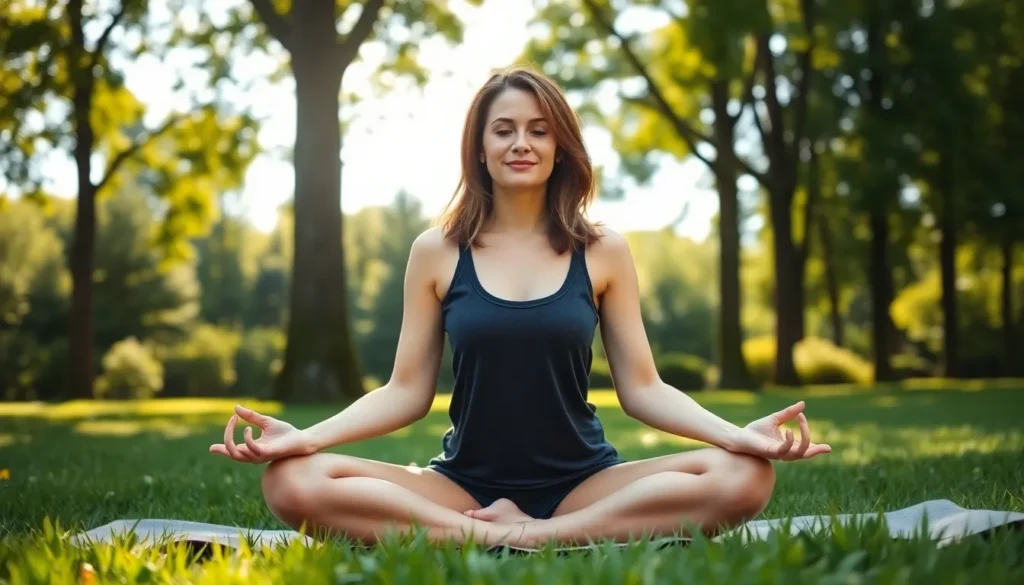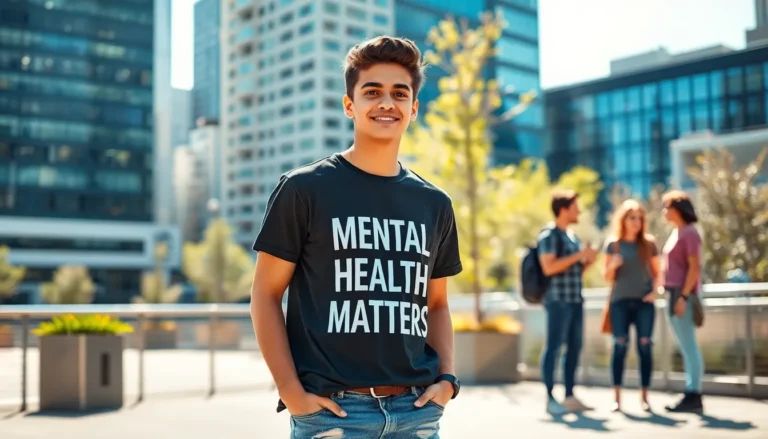Table of Contents
ToggleIn today’s fast-paced world, stress has become an unwelcome companion for many. From work pressures to personal challenges, it’s easy to feel overwhelmed. Fortunately, effective stress relief techniques can provide the much-needed respite that individuals seek.
Exploring various methods can empower people to reclaim their peace of mind and enhance their overall well-being. Whether it’s through mindfulness practices, physical activities, or simple lifestyle changes, these techniques offer practical solutions to combat stress. Embracing these strategies can lead to a more balanced and fulfilling life.
Overview of Stress Relief Techniques
Stress relief techniques encompass a wide range of practices aimed at reducing stress and enhancing well-being. These methods can range from relaxation strategies to physical activities and lifestyle adjustments.
Mindfulness Practices
- Meditation: Focused attention on breathing or a particular thought eases tension.
- Yoga: Combines physical postures with breathing exercises, promoting relaxation.
- Deep Breathing: Involves inhaling deeply through the nose and exhaling through the mouth, calming the mind.
Physical Activities
- Exercise: Engaging in aerobic activities, such as running or cycling, releases endorphins, improving mood.
- Walking: A daily walk can provide a mental break and improve cardiovascular health.
- Dancing: Enjoyable and expressive, dancing offers both physical movement and emotional release.
Lifestyle Changes
- Balanced Diet: Consuming nutritious foods supports overall health and enhances energy levels.
- Sleep Hygiene: Establishing a consistent sleep schedule improves mood and cognitive function.
- Time Management: Prioritizing tasks reduces feelings of being overwhelmed, fostering a sense of control.
Adopting these stress relief techniques contributes to overall well-being and fosters resilience against daily pressures. Each technique offers unique benefits and can be tailored to fit individual preferences and lifestyles.
Physical Techniques

Physical techniques provide tangible relief from stress through movement and breath. These methods enhance well-being and foster emotional balance.
Exercise and Movement
Exercise and movement significantly reduce stress levels. Engaging in activities like running, cycling, and swimming triggers the release of endorphins, which promote feelings of happiness. Regular exercise enhances sleep quality, improves energy levels, and boosts self-esteem. Aim for at least 150 minutes of moderate aerobic activity per week, such as brisk walking or dancing, for optimal benefits. Incorporating strength training exercises, at least two days a week, also contributes to overall physical and mental health.
Deep Breathing Exercises
Deep breathing exercises effectively lower stress and induce relaxation. These exercises stimulate the body’s relaxation response, reducing heart rate and lowering blood pressure. Practicing techniques like diaphragmatic breathing can help. To perform this, inhale deeply through the nose, allowing the abdomen to expand, and then exhale slowly through the mouth. Aim for at least five minutes of deep breathing daily to promote calmness and clarity of mind. Incorporating this technique during stressful situations can enhance emotional resilience.
Mental Techniques
Mental techniques play a crucial role in managing stress effectively. These strategies leverage the mind’s power to promote relaxation and foster resilience.
Mindfulness and Meditation
Mindfulness and meditation techniques cultivate present-moment awareness, reducing stress and enhancing emotional health. Practicing mindfulness involves focusing on the here and now, which helps individuals detach from overwhelming thoughts. Regular meditation sessions, such as guided or transcendental meditation, promote mental clarity and relaxation. Research indicates that just 10 minutes of daily meditation can significantly lower anxiety levels. Many individuals find that engaging in mindfulness exercises, such as body scans or mindful breathing, encourages a calm state of mind and better coping skills.
Visualization Practices
Visualization practices utilize mental imagery to reduce stress. This technique involves picturing serene environments or positive outcomes to create a sense of calm and control. By visualizing peaceful scenes, individuals can lower their heart rate and reduce feelings of tension. Some studies show that athletes use visualization to enhance performance by mentally rehearsing success. Practicing visualization for 5 to 10 minutes can lead to greater relaxation and mental focus, making it a valuable tool for stress relief.
Emotional Techniques
Emotional techniques for stress relief focus on addressing feelings and thoughts to regain balance. These strategies foster emotional resilience and enhance overall mental well-being.
Journaling and Expressive Writing
Journaling and expressive writing provide a safe outlet for emotions. Writing thoughts and feelings helps individuals process experiences and gain clarity. Studies show that expressive writing can lower stress and improve emotional health. Each entry allows for reflection, facilitating emotional release and understanding. Incorporating daily journaling, even for 10 minutes, promotes mindfulness and can lead to heightened self-awareness.
Positive Affirmations
Positive affirmations empower individuals to challenge negative self-talk. By affirming positive statements, individuals can reshape their mindset and boost self-esteem. Research indicates that repeating affirmations can lead to increased motivation and improved emotional regulation. Choose affirmations that resonate personally, and practice them daily to reinforce positive beliefs. Examples such as “I’m capable of overcoming challenges” or “I deserve peace and happiness” can shift thought patterns towards optimism and resilience.
Lifestyle Changes
Lifestyle changes play a crucial role in managing stress levels. Adopting healthier habits can lead to significant improvements in emotional and physical well-being.
Nutrition and Hydration
Nutrition impacts both mood and stress levels. A diet rich in whole foods, such as fruits, vegetables, lean proteins, and whole grains, provides essential nutrients that support brain function. Omega-3 fatty acids, found in fish and flaxseeds, reduce inflammation and enhance mood. Staying hydrated also affects stress response; drinking adequate water improves concentration and regulates the body’s stress hormones. Individuals should aim for at least 8 cups of water daily and consider reducing caffeine and sugar intake, both of which can exacerbate feelings of anxiety.
Sleep Hygiene
Sleep hygiene is crucial for effective stress management. Quality sleep enhances mood and cognitive functioning, while sleep deprivation can elevate stress levels. Individuals should establish a consistent sleep schedule, going to bed and waking up at the same time each day. Creating a calming bedtime routine, such as reading or practicing relaxation techniques, prepares the body for restful sleep. Keeping the bedroom dark, cool, and quiet promotes a better sleep environment. Adults should aim for 7-9 hours of sleep each night to optimize stress relief and overall well-being.
Embracing effective stress relief techniques can transform one’s approach to life’s challenges. By integrating physical activities mindfulness practices and lifestyle changes individuals can cultivate resilience and enhance their overall well-being. Each method offers unique benefits and can be tailored to fit personal preferences making it easier to find what works best.
Prioritizing stress management isn’t just about overcoming obstacles; it’s about fostering a balanced and fulfilling life. With the right strategies individuals can reclaim their peace of mind and navigate daily pressures with confidence. Adopting these techniques can lead to lasting improvements in both emotional and physical health enriching one’s quality of life.




